Podcast: Play in new window
Subscribe: Apple Podcasts | RSS | More
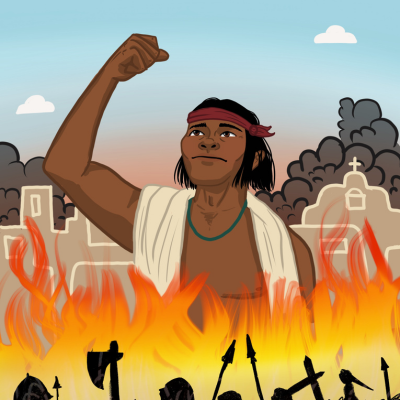
This week on The Children’s Hour, learn about the history of the Southwest United States. Adapted from our educational podcast series: A Brief History of the American Southwest for Kids, join us for a dive into 23,000 years of American history.
The Southwestern United States has been continuously occupied by people for over 23,000 years. We know this because of some footprints that were found at White Sands National Park. The people who left these footprints were children and adults, along with some now extinct megafauna. Our story of this region begins with some teenagers, and a giant sloth. We hear from archaologists David Bustos at WSNP and Mary Weeahkee from the New Mexico Office of Archeological Studies, and Piro Manso Tiwa Tribal Historian, Diego Medina.
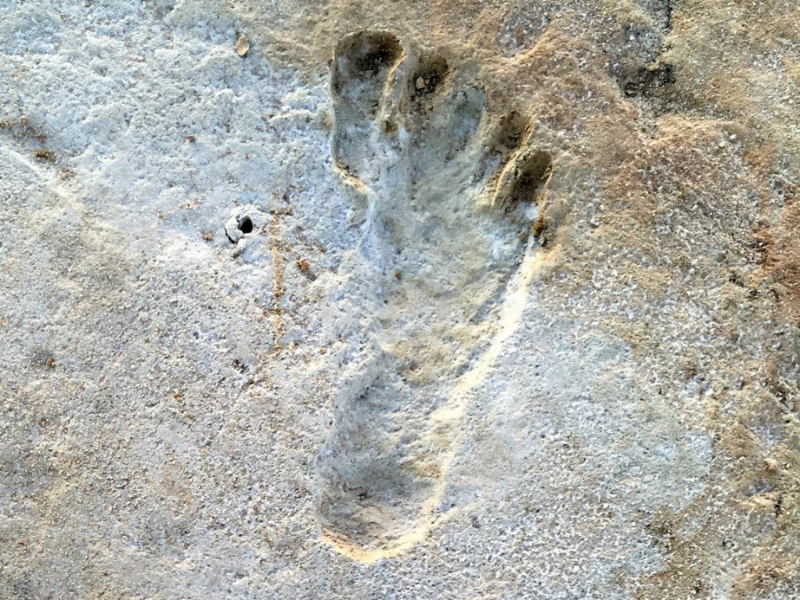
People lived all over what is now New Mexico, Arizona, Utah and Colorado. Archeologists find evidence of villages nearly everywhere, growing more and more sophisticated in their architecture, engineering, and locations as the centuries rolled by. Mary Weahkee and Pueblo cultural educator Jon Ghahate explain the ingenuity behind these places, including a centralized gathering place for thousands of people: Chaco Canyon which includes a complex system of irrigation canals, a celestial observatory, and evidence of trade with people from all over the Americas.
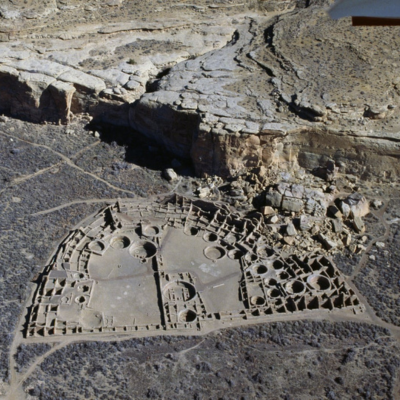
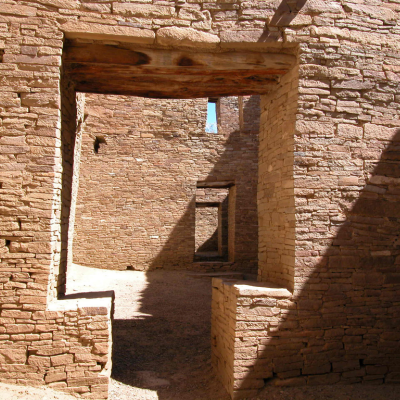
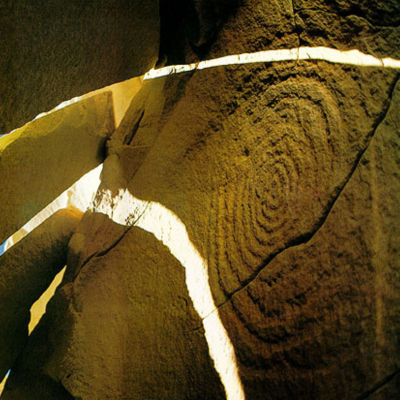
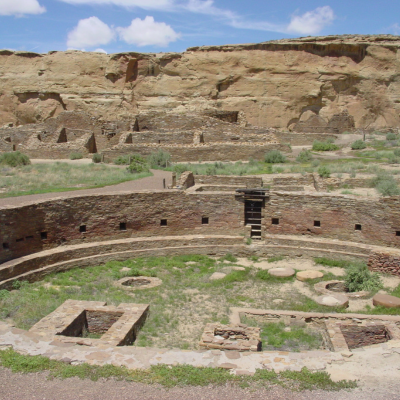
In July of 1540, the Ashiwi people watched as a group of armed strangers – who turned out to be Europeans – came into the desert Southwest, on horseback, and with an agenda of finding the cities of gold they had heard were located in the desert Southwest.
Hear the story of the day when the A:shiwi (Zuni) people met some uninvited visitors. Learn how this moment changed the course of the history of the people already living in the desert southwest, and we see artifacts preserved from that fateful encounter.
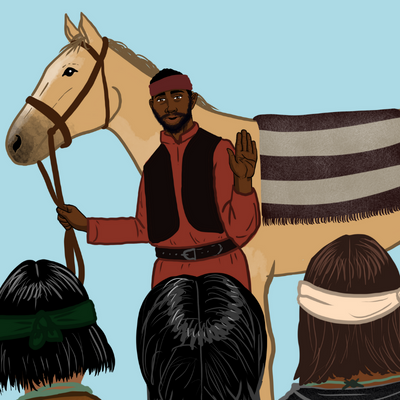

The new neighbors had so many demands and harsh punishments, the Pueblo peoples had enough and organized a revolt, sending the priests and other Europeans packing. Meet Po’Pay, the architect behind the Pueblo Revolt of 1680. Since their incursion onto the homelands of the Pueblo peoples, the Spanish established a harsh colonial feudal rule which generated animosity. Po’Pay’s leadership united Pueblo communities, which resulted in forcing the Spanish to realize their only option was to leave.
Within two decades, the Spanish settlers returned to the Rio Grande Valley, laying claim to the fertile valleys to build haciendas, churches and towns, to be owned by the Spanish crown. Our virtual field trip to Los Luceros Historic Site tells the story.
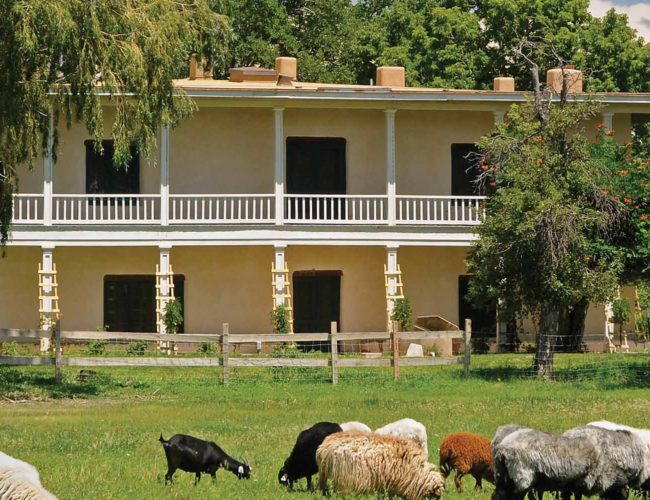
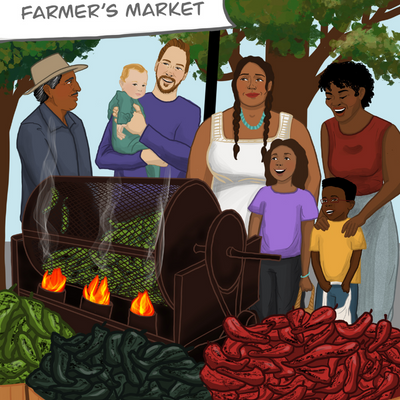
In 1864, the Treaty of Guadalupe Hidalgo made the American Southwest a United States territory where the land would soon be crisscrossed with train tracks and roads, with new economies of health, culture and anthropological tourism, as well as harsh and inhumane impacts to Indigenous peoples.
Learn about the era of nationalization of the American Southwest after the Treaty of Guadalupe Hidalgo made the region a territory of the United States, when the Camino Real and Santa Fe Trail transformed into routes that paved the way for railway development, as well as military industrialization, and statehood.
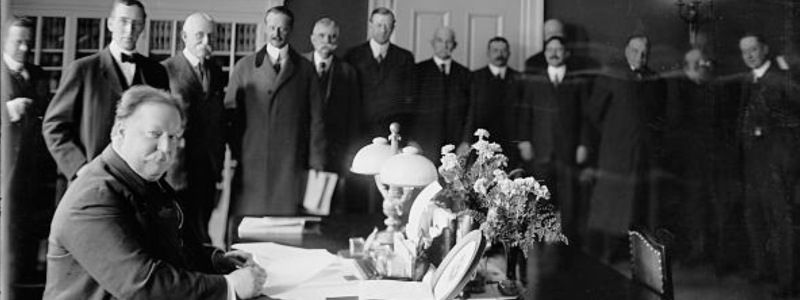
This is a radio adaptation of our six part podcast series A Brief History of the American Southwest for Kids. You can also see the full hour-long videos of our virtual field trips to create this project.
This episode of The Children’s Hour was written and produced by our Executive Producer, Katie Stone, along with Senior Producer Christina Stella.
This series was produced with the support of our listeners, and the Infinite Gesture Fund at the Albuquerque Community Foundation, the New Mexico Humanities Council and the National Endowment for the Humanities. Any views, findings, conclusions, or recommendations expressed in this program do not necessarily represent those of the National Endowment for the Humanities or the New Mexico Humanities Council.
© 2024 The Children’s Hour Inc. All Rights Reserved
Some songs in our programs are not found on Spotify.
Playlist: Brief History of the American Southwest Radio Special
| title | artist | album |
|---|---|---|
| Place I Call Home | Native Roots | Most High |
| Tsel-Mo-ah - Butterfly Song (Featuring Patrick Shendo Mirabal) | Robert Mirabal | In the Blood |
| Simple Melody | Blue Dot Sessions | Speakeasy |
| Buffalo Dancer | Jimmy Shendo & Moiety | Walking the Life Road |
| Anthem of the American Indian | Xit | Silent Warrior |
| Awakening | Xit | Silent Warrior |
| Asi Es Nuevo Mexico | Los Reyes de Albuquerque | Lo Mejor de Los Reyes de Albuquerque |
| New Mexico | Wake Self | Good Things Happen to Those Who Wake |
CLICK HERE for
A Brief History of the American Southwest for Kids®
A six part podcast and curriculum series
A Brief History of the American Southwest for Kids
The Children’s Hour has produced a six part podcast and curriculum series on the history of the American Southwest, in partnership with the Center for New Mexico Archaeology, the Native American Community Academy (NACA), NACA Inspired Schools Network, and numerous others.
Typically a region of the US that is overlooked in textbooks, the Southwestern United States history begins 23,000 years ago in what is now know as White Sands National Park. Students will learn how the area was settled, from its Indigenous beginnings through the brutal era of Colonization by Spain, and then the United States, and finally emerging into statehood. This series highlights the moments that changed the history of this region and this nation forever.
This series comes with a free, download-able Learn-Along Guide that meets and cites US national education standards for elementary through high school students. Find it, and a link to cite the national education standards below.
Our production began with “virtual field trips” for students that include expert interviews to better understand each time period. Students can hear the full conversations with our experts by watching the field trips.
Join us, and learn about our fragile, and deeply rooted story of our high desert region over six episodes, and through our Learn-Along guide.
Acknowledgements
A Brief History of the American Southwest for Kids was produced and written by Katie Stone and Christina Stella. Our “True or False” questions were written by The Children’s Hour intern, Julia Wolfe. Voicing on this project was provided by Kids Crew members Lily Mae Williams-Hobbs and Isaac Lacerda. Our Learn-Along guide was researched and written by Jonathan Dunski. Art found in our guide and with this series was the mastermind of artist Nicole Neidhardt and may not be duplicated without permission of The Children’s Hour Inc. All art, text, audio, and other work found with this project © 2023 The Children’s Hour Inc.
Many thanks to our History Review Team, which included archaeologist Mary Weahkee, Director Eric Blinman, and archeologist Shelby Jones-Cervantes from the New Mexico Center for Archeology, David Bustos from White Sands National Park, Nathan Hatfield, Chief Interpretive Ranger at Chaco Culture Park, Curtis Quam, Director of A:shiwi A:wan Museum and Culture Center, Diego Medina, Piro-Manso-Tiwa Tribal Preservation Officer, Pueblo educator Jon Ghahate, Director Carlyn Stewart and educator Rebecca Ward from Los Luceros Historic Site, historian and educator Melanie LaBorwit, New Mexico State Historian Dr. Rob Martinez, Dr. Kara Carroll, historian at Central New Mexico College, Dr. Virginia Scharff, distinguished Professor Emeritus at the University of New Mexico, Dr. Margaret DePond from the New Mexico Department of Cultural Affairs, and writer Jim O’Donnell. We had help from Joshua Krause at the NACA Inspired Schools Network and are grateful to the more than 600 students who attended our live Virtual Field Trips.
This series was produced with the support of our listeners, and the Infinite Gesture Fund at the Albuquerque Community Foundation, the New Mexico Humanities Council and the National Endowment for the Humanities. Any views, findings, conclusions, or recommendations expressed in this program do not necessarily represent those of the National Endowment for the Humanities or the New Mexico Humanities Council.

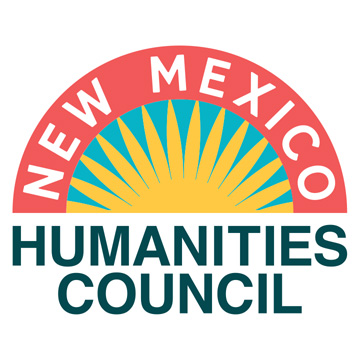

© 2022-2024 The Children’s Hour Inc. All Rights Reserved.
Thank you Sponsors











